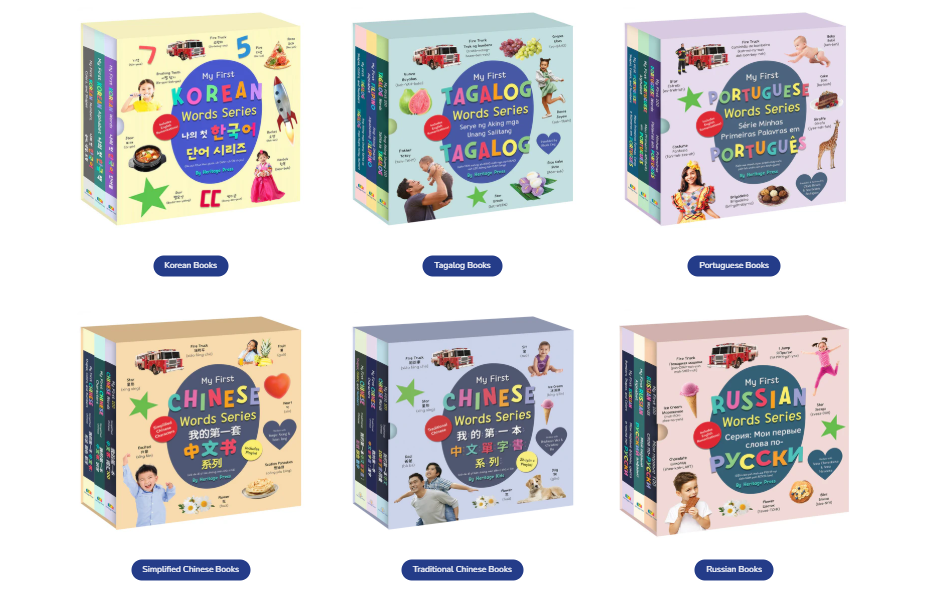The world is beautifully diverse, filled with languages that connect people across cultures and generations. Introducing children to bilingual books at a young age can be one of the most powerful ways to nurture curiosity, understanding, and creativity. When a child reads in two languages, they don’t just learn words; they learn perspectives, traditions, and ways of seeing the world.
The Wonder of Bilingual Reading
Bilingual books do more than teach vocabulary; they create bridges between cultures. A child who reads stories written in two languages begins to appreciate the richness of both. These books often weave cultural details, idioms, and expressions that open a child’s mind to how others think and communicate.
Whether it’s a tale of friendship, a bedtime story, or a folk legend, bilingual books let children experience the rhythm and melody of multiple languages simultaneously. This not only strengthens their reading skills but also encourages empathy and curiosity for the world beyond their own.
Early Language Development
Research consistently shows that children who grow up exposed to more than one language tend to develop stronger problem-solving skills and better memory retention. When children read bilingual stories, they subconsciously compare words, sentence structures, and meanings across languages. This dual processing enhances cognitive flexibility—a skill that benefits them for life.
Moreover, bilingual reading helps in understanding context. When a child sees the same story told in two languages, they begin to recognise patterns and grasp abstract ideas faster. This natural language switching strengthens both comprehension and attention span.
Cultural Awareness Through Stories
Language and culture go hand in hand. Through bilingual stories, children learn about festivals, customs, and values that might differ from their own. A bilingual story about a New Year celebration, for example, could teach a child not only new words but also how families around the world celebrate unity and hope.
Parents often find that bilingual books become tools for preserving heritage. For families living abroad, reading in their native tongue alongside English keeps cultural traditions alive. It’s a comforting way for children to feel connected to their roots while adapting to a new environment.
Confidence in Communication
Children who grow up reading bilingual books often become more confident communicators. They learn how to express ideas in different ways, understand nuances, and think before they speak. This adaptability makes them open-minded learners who are comfortable in multicultural settings.
Additionally, bilingual reading builds listening and pronunciation skills. As children encounter words in another language, they begin to associate sounds with symbols more easily, which can even make learning a third language easier later in life.
The Role of Parents and Educators
Parents and teachers play a vital role in nurturing bilingual literacy. Reading aloud in two languages, discussing meanings, or even acting out scenes can make learning interactive and memorable. Many parents worry that exposing children to two languages may cause confusion, but the opposite is true. Studies show that bilingual children quickly learn to separate the languages and understand when to use each one.
Educators can also introduce bilingual story sessions in classrooms. Such practices help children from different linguistic backgrounds feel included and proud of their heritage while encouraging others to appreciate linguistic diversity.
Using Chinese Books to Inspire Bilingual Learning
Among the many languages children can explore, Chinese stands out as both ancient and fascinating. Children’s Chinese books are beautifully designed to introduce learners to characters, tones, and simple expressions through stories and illustrations. These books often balance visual appeal with educational depth, making it easy for children to absorb new vocabulary while enjoying the storyline.
Reading bilingual books that include Chinese text side by side with English helps children recognise symbols, remember meanings, and even write basic characters. More importantly, it allows them to experience a different way of thinking—one where language is deeply connected to art and emotion.
Parents can start with picture-based Chinese books that include short phrases and pronunciation guides. As children grow more confident, they can move to storybooks that expand vocabulary and introduce moral lessons or cultural traditions. When bilingual learning feels like play, it naturally becomes part of a child’s daily life.
Encouraging Daily Bilingual Reading Habits
Building a routine around bilingual reading helps children see it as an enjoyable habit rather than a task. Here are a few tips for parents and caregivers:
- Set a reading time: Even ten minutes a day with bilingual books can make a big difference.
- Use interactive methods: Encourage children to act out scenes, repeat phrases, or ask questions in both languages.
- Make it visual: Choose illustrated stories that highlight both language versions clearly.
- Be patient: Allow children to mix languages as they learn—this is a normal part of bilingual development.
With consistency and creativity, reading in two languages becomes a joyful ritual that enriches both the mind and heart.
The Long-Term Benefits
Beyond linguistic skills, bilingual reading shapes how children view the world. They become better at empathy, perspective-taking, and global awareness. In a rapidly interconnected world, these are invaluable qualities.
Children who grow up reading bilingual books often display improved academic performance, stronger social connections, and an enduring appreciation for cultural diversity. Most importantly, they carry forward a love for learning that extends far beyond languages.
Reading in two languages is not just a skill, it’s a lifelong gift. Bilingual books open the door to a world where communication, understanding, and imagination blend seamlessly. And through the pages of stories—whether in English, Chinese, or any other tongue, children discover the universal language of connection and curiosity.
FAQs
Q1. Can bilingual books help children who struggle with reading?
Yes. Bilingual books often present the same text in two languages, which allows children to use their stronger language as a reference. This dual exposure builds confidence and gradually improves comprehension in the second language.
Q2. What age is best to start reading bilingual books?
The earlier, the better. Even toddlers benefit from hearing stories in multiple languages. Exposure during early development helps the brain adapt to language sounds more easily, making future learning smoother.
Q3. How can parents support bilingual learning at home?
Parents can create a rich language environment by labeling objects in both languages, reading aloud daily, and watching bilingual shows or songs together. Encouragement and consistency are key.














Leave a Reply